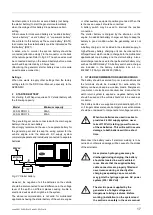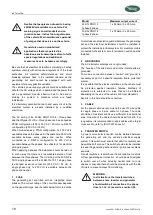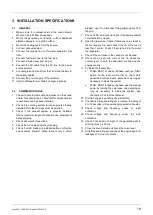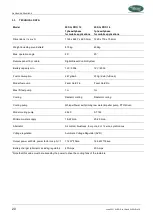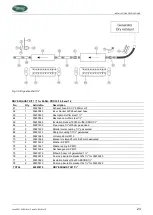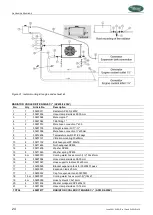
DIAGRAMS & DRAWINGS
13
June 2021 W-SQ-Pro 15 and W-SQ-Pro 18
Bottom mounted radiator
When bottom mounted the radiator should not be the lowest
point of the vehicle to avoid damage.
A free flow of air should be guaranteed. When horizontal
mounted, the fan should be on top, which causes a flow of
air downwards. Often it is possible to find a place where
extra space above the fan helps to create a free flow of air.
It is recommended to make a shield below the radiator to
catch stones and dirt and operates as a spoiler. The
distance between the radiator and the shield should be at
least 50 mm. Sometimes it is possible to build the radiators
and shield on a sub frame that is mounted below the vehicle
as a module. We recommend mounting the radiator at a
small angle, with the outlet at the highest point. This
ensures better ventilation of the system.
Measures have to be taken to prevent the
hot air circulating and reducing the
capacity of the radiators. Refer to figure
17.
Figure 17: Bottom mounted radiators with shield
Figure 18: Making use of the space below the floor to get
an optimal flow of air through the radiator.
Side mounted radiator
Most effective and easy is to mount the radiator in the side
of the vehicle, if possible below the level of the top of the
engine. A louvered grid should protect the radiator from rain
and objects, but must not block the airflow. The fan should
be inwards which causes the air to blow outwards. A
disadvantage of having the radiator in the side is possibly
more noise of the electric fan and a flow of air that could be
felt by people passing by.
A free flow of air should be guaranteed. The ventilation
connection of the cooling system that goes to the expansion
tank, should be in the outgoing coolant flow on top of the
radiator.
Figure 19: Side mounted radiator
Roof mounted radiator
The radiator on the roof is often the best option from the
point of view of keeping the noise of the fans away from
people and it will give the best result in dissipating the heat.
However, often this option conflicts with the possible need
to keep the vehicle as low as possible.
Another disadvantage is that the piping has to go through
the roof which requires provisions to be waterproof. Also
negative is that roof mounted radiators are more sensitive
for air traps (see figure 11). When having enough space it
would be ideal to have the radiators vertically mounted on
the roof. Note that the expansion tank should be above the
radiator.
When having the radiator horizontally mounted on the roof
(refer to figure 20) enough space (50 mm) should be
between the roof and the radiator fan to have a free flow of
air. When the radiators are roof mounted there should be
protection against weather conditions. To avoid damage
while the vehicle is driving at high speed, the use of a spoiler
could be necessary.

















